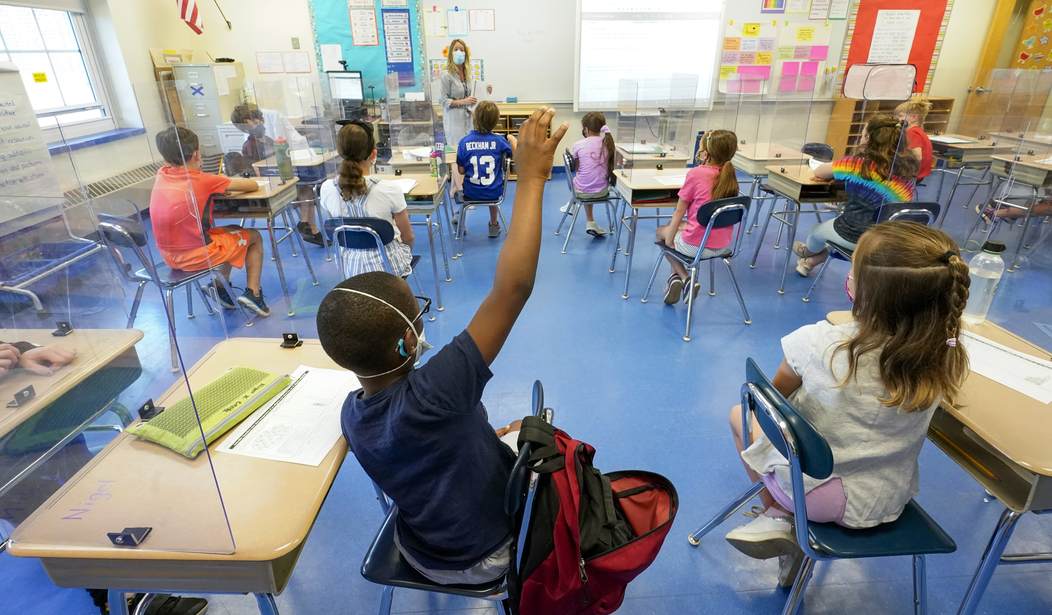Education reform comes in many different shapes and sizes. Oftentimes, the political world argues on the basis of funding for public education, shutting down or expanding the federal Department of Education, or opening up/restricting school choice. These are largely policy battles that are fought on the political level and have very little impact on the classroom.
But what’s happening in the classroom, with regard to Critical Race Theory, talk of race and equity, and the like have brought the classroom to the center of the political fight, and public education’s reaction to parents wanting more say did them absolutely no favors in Virginia, which brought a major backlash against the Democrats and their allies in the teachers’ unions and public education.
There are certain reforms, however, that are not and should not be political, though various actors in the world of public discourse will try to make them such.
The pandemic may have had some of the most drastic long-term effects on students who were kept out of schools. A lack of structure, human connection, and meaningful education has led to major deficits in the social and emotional development of children and greatly impacted their academic performance. As a result, we are seeing lower grades and performances on testing than we would like to see, and it’s causing some folks to re-think how education is being done in the classroom.
One of those solutions was the subject of a Los Angeles Times piece that completely misses the point and tries to make political an issue that is simply more responsible education for all students. It will likely have an impact along the lines of race and class, but the issue being discussed is not something that should be implemented because of race and equity. That doesn’t stop the Times, and the teachers they are interviewing, from making it seem that way.
Some students accumulated so many points early on that by the end of the term they knew they didn’t need to do more work and could still get an A. Others — often those who had to work or care for family members after school — would fail to turn in their homework and fall so far behind that they would just stop trying.
“It was literally inequitable,” he said. “As a teacher you get frustrated because what you signed up for was for students to learn. And it just ended up being a conversation about points all the time.”
These days, the Alhambra High School English teacher has done away with points entirely. He no longer gives students homework and gives them multiple opportunities to improve essays and classwork. The goal is to base grades on what students are learning, and remove behavior, deadlines and how much work they do from the equation.
The changes Moreno embraced are part of a growing trend in which educators are moving away from traditional point-driven grading systems, aiming to close large academic gaps among racial, ethnic and economic groups. The trend was accelerated by the pandemic and school closures that caused troubling increases in Ds and Fs across the country and by calls to examine the role of institutionalized racism in schools in the aftermath of the murder of George Floyd by a police officer.
Los Angeles and San Diego Unified — the state’s two largest school districts, with some 660,000 students combined — have recently directed teachers to base academic grades on whether students have learned what was expected of them during a course — and not penalize them for behavior, work habits and missed deadlines. The policies encourage teachers to give students opportunities to revise essays or retake tests to show that they have met learning goals, rather than enforcing hard deadlines.
All of this is well and good. While they don’t come out and say it, this is actually called standards-based grading, and it’s a somewhat-new movement in the education community that eliminates arbitrary points and focuses entirely on the standards and skills students are meant to learn in a course.
So let’s say a high school civics teacher in Florida is trying to get students to understand how the Constitution establishes the idea of “citizenship.” The Florida state standards for social studies list that as follows:
SS.912.CG.2.1 Explain the constitutional provisions that establish and affect citizenship.
- Students will explain how the concept of citizenship in the United States has changed over the course of history (i.e.,
13th, 14th, 15th and 19th Amendments).
The teacher can assign students an essay explaining how the Constitution might define citizenship and how it has changed over time. If a student writes an essay that just talks about the 13th, 14th, and 15th amendments, the teacher can grade it one of two ways. The first, more traditional way would be to assign it a point value. The teacher might think “Well, the grammar was okay and what the student wrote is correct but the essay is missing other essential elements necessary to completely answer the question… eh, 39 out of 50 points.” The kid gets a 78 percent on the paper and that goes in the gradebook. Maybe the teacher gives the student a chance to re-work the essay and get a better score, but there are many times where the teacher doesn’t give that opportunity or the student doesn’t take the opportunity. Either way, the class moves on and that opportunity may be lost forever.
The second way the teacher can grade the assignment is by not assigning a point value but by acknowledging whether or not a student has mastered the skill. In this case, the student has not and must prove that they have before moving on. Maybe it’s redoing the assignment, or maybe it’s in a future assignment, but the student has to show mastery rather than meeting the number of points needed to pass the course.
There are plenty of research papers and studies suggesting that switching to standards-based grading has a positive impact on student performance and even participation. One of the great weaknesses of points-based grading is the fact that a student can reach a mathematical threshold where it is impossible to fail even if they don’t do any more assignments. Under standards-based grading, this issue can be solved by making those standards the requirement for passing the course.
But where things get tricky in all this is when folks like the Los Angeles Times reporter take the idea of a strategy that decreases the achievement gap and interprets that to mean that is the whole point of the strategy. It is, at best, a happy side effect of switching to standards-based grading. It isn’t, nor should it be, the focal point of switching to this grading practice.
But that is a fundamental issue in education now. Much like so many other aspects of society, we are forced to see things through the lens of race. “What impact does this have on black students? How does this make their success more like rich, white kids?” These are the types of questions that ultimately dilute the quality of education reform efforts and put the focus on all the wrong things. Several education efforts in the past have been declared great because they “close” the education gap, though in reality, they do little more than drag white students down without bringing any improvement to black students’ performance. But the gap is closed and “equity” is met!
One of the reasons Virginia went the way it did last week is because of the issue of race, though not in the way most in the media are portraying it. Critical Race Theory has a lot of black and white parents concerned with how their children are being told to view themselves. If the whole point of fighting racism is to promote equality and opportunity to all regardless of race, then automatically labeling a student as victim or oppressor does not seem to help the issue, but rather exacerbates it.
That’s why race reform efforts in school end up doing more harm than good — they take away from white students but never really transfer what they take to black students. Everyone suffers and no one gets any better.
That’s why some strategies like standards-based grading are true equalizers. They continue to push necessary education standards to all students and require students to master them rather than master the math that determines whether or not you have enough points to pass a course. We need to remember that when looking at education and classroom reform efforts in the future.














